Hey guys. So in this video, we're going to talk about a specific type of reduction reaction that can happen with Benzene and that's called the Birch reduction. Let's just take a look at the general reaction for a second. What a Birch reduction does is it combines elemental sodium with an amine and alcohol to turn a benzene into what we call an isolated diene. Specifically, if this were to happen with an unsubstituted benzene like we have here, our product would be an isolated cyclohexadiene. Two double bonds that are far apart from each other in a 1,4 position on a cyclohexane. Now, if you take a closer look at these reagents, they might look familiar because these are very similar to the reagents that we use on a dissolving metal reduction. This is a reaction from Organic Chemistry 1 that we learned a long time ago that worked with alkynes and it was a radical-mediated mechanism. It turns out that this mechanism is really the same exact mechanism except it's going to work with benzene instead of with an alkyne. Let's get right into it. The mechanism for this reduction is going to proceed through elemental sodium, which means it's going to possess just one electron. When that one electron donates to any of the carbons, we're going to have to break a bond. But this is going to be a mechanism where we have a combination of half-headed arrows and normal arrows just like the dissolving metal reduction. How there were some arrows that moved one radical and some arrows that moved a lone pair. When we make that bond, we have to break this bond in order to make room for the radical. And in order to keep these charges as far away from each other as possible or these intermediates as far away from each other as possible, this double bond is going to ionize into a lone pair onto the very bottom. So basically, the furthest position possible from the radical, we're going to get an anion. So let's go ahead and draw the product of this first step. What we're now going to get is a single radical at the top, double bonds on both sides, and now a lone pair at the bottom which is going to be a carbanion. This intermediate is called a radical anion, which makes sense because that's what it is. It's a radical and it's an anion. This is where our ethanol comes in. Our ethanol is going to serve as a protonating agent. Just so you know, ethanol isn't the only alcohol you can use. Some texts will use tert-butanol. It doesn't matter guys. It's a source of hydrogen. That's the biggest deal. EtOH, my anion is going to grab the H and give a negative charge to the O. Now what I'm going to get is a molecule that looks like this. I've got my two double bonds. I still have my radical. Ethanol. At this point, I react with another equivalent of my elemental sodium. That elemental sodium is going to donate electrons to that same location. Now I'm going to get a lone pair anion. This is just a carbanion intermediate. This reaction just repeats itself. That's one thing about maybe dissolving metal reduction if you recall. It was the same thing twice. Here, we would react again with another equivalent of ethanol and we would wind up getting our isolated diene because now I've got H's, two H's on the bottom. I've got two H's on the top. It's the ugliest H ever. And I've got my isolated diene which is this molecule here. For this reason, the fact that it reacts twice, sometimes you might see professors actually write ethanol times two or alcohol times two. It doesn't matter. It's just going to have enough equivalents to make the reaction go to completion. That's really it. That's the mechanism for Birch reduction. And now what we're going to do is we're going to talk about specific regiochemistry that you have to consider with a Birch reduction.
- 1. A Review of General Chemistry5h 5m
- Summary23m
- Intro to Organic Chemistry5m
- Atomic Structure16m
- Wave Function9m
- Molecular Orbitals17m
- Sigma and Pi Bonds9m
- Octet Rule12m
- Bonding Preferences12m
- Formal Charges6m
- Skeletal Structure14m
- Lewis Structure20m
- Condensed Structural Formula15m
- Degrees of Unsaturation15m
- Constitutional Isomers14m
- Resonance Structures46m
- Hybridization23m
- Molecular Geometry16m
- Electronegativity22m
- 2. Molecular Representations1h 14m
- 3. Acids and Bases2h 46m
- 4. Alkanes and Cycloalkanes4h 19m
- IUPAC Naming29m
- Alkyl Groups13m
- Naming Cycloalkanes10m
- Naming Bicyclic Compounds10m
- Naming Alkyl Halides7m
- Naming Alkenes3m
- Naming Alcohols8m
- Naming Amines15m
- Cis vs Trans21m
- Conformational Isomers13m
- Newman Projections14m
- Drawing Newman Projections16m
- Barrier To Rotation7m
- Ring Strain8m
- Axial vs Equatorial7m
- Cis vs Trans Conformations4m
- Equatorial Preference14m
- Chair Flip9m
- Calculating Energy Difference Between Chair Conformations17m
- A-Values17m
- Decalin7m
- 5. Chirality3h 39m
- Constitutional Isomers vs. Stereoisomers9m
- Chirality12m
- Test 1:Plane of Symmetry7m
- Test 2:Stereocenter Test17m
- R and S Configuration43m
- Enantiomers vs. Diastereomers13m
- Atropisomers9m
- Meso Compound12m
- Test 3:Disubstituted Cycloalkanes13m
- What is the Relationship Between Isomers?16m
- Fischer Projection10m
- R and S of Fischer Projections7m
- Optical Activity5m
- Enantiomeric Excess20m
- Calculations with Enantiomeric Percentages11m
- Non-Carbon Chiral Centers8m
- 6. Thermodynamics and Kinetics1h 22m
- 7. Substitution Reactions1h 48m
- 8. Elimination Reactions2h 30m
- 9. Alkenes and Alkynes2h 9m
- 10. Addition Reactions3h 18m
- Addition Reaction6m
- Markovnikov5m
- Hydrohalogenation6m
- Acid-Catalyzed Hydration17m
- Oxymercuration15m
- Hydroboration26m
- Hydrogenation6m
- Halogenation6m
- Halohydrin12m
- Carbene12m
- Epoxidation8m
- Epoxide Reactions9m
- Dihydroxylation8m
- Ozonolysis7m
- Ozonolysis Full Mechanism24m
- Oxidative Cleavage3m
- Alkyne Oxidative Cleavage6m
- Alkyne Hydrohalogenation3m
- Alkyne Halogenation2m
- Alkyne Hydration6m
- Alkyne Hydroboration2m
- 11. Radical Reactions1h 58m
- 12. Alcohols, Ethers, Epoxides and Thiols2h 42m
- Alcohol Nomenclature4m
- Naming Ethers6m
- Naming Epoxides18m
- Naming Thiols11m
- Alcohol Synthesis7m
- Leaving Group Conversions - Using HX11m
- Leaving Group Conversions - SOCl2 and PBr313m
- Leaving Group Conversions - Sulfonyl Chlorides7m
- Leaving Group Conversions Summary4m
- Williamson Ether Synthesis3m
- Making Ethers - Alkoxymercuration4m
- Making Ethers - Alcohol Condensation4m
- Making Ethers - Acid-Catalyzed Alkoxylation4m
- Making Ethers - Cumulative Practice10m
- Ether Cleavage8m
- Alcohol Protecting Groups3m
- t-Butyl Ether Protecting Groups5m
- Silyl Ether Protecting Groups10m
- Sharpless Epoxidation9m
- Thiol Reactions6m
- Sulfide Oxidation4m
- 13. Alcohols and Carbonyl Compounds2h 17m
- 14. Synthetic Techniques1h 26m
- 15. Analytical Techniques:IR, NMR, Mass Spect7h 3m
- Purpose of Analytical Techniques5m
- Infrared Spectroscopy16m
- Infrared Spectroscopy Table31m
- IR Spect:Drawing Spectra40m
- IR Spect:Extra Practice26m
- NMR Spectroscopy10m
- 1H NMR:Number of Signals26m
- 1H NMR:Q-Test26m
- 1H NMR:E/Z Diastereoisomerism8m
- H NMR Table24m
- 1H NMR:Spin-Splitting (N + 1) Rule22m
- 1H NMR:Spin-Splitting Simple Tree Diagrams11m
- 1H NMR:Spin-Splitting Complex Tree Diagrams12m
- 1H NMR:Spin-Splitting Patterns8m
- NMR Integration18m
- NMR Practice14m
- Carbon NMR4m
- Structure Determination without Mass Spect47m
- Mass Spectrometry12m
- Mass Spect:Fragmentation28m
- Mass Spect:Isotopes27m
- 16. Conjugated Systems6h 13m
- Conjugation Chemistry13m
- Stability of Conjugated Intermediates4m
- Allylic Halogenation12m
- Reactions at the Allylic Position39m
- Conjugated Hydrohalogenation (1,2 vs 1,4 addition)26m
- Diels-Alder Reaction9m
- Diels-Alder Forming Bridged Products11m
- Diels-Alder Retrosynthesis8m
- Molecular Orbital Theory9m
- Drawing Atomic Orbitals6m
- Drawing Molecular Orbitals17m
- HOMO LUMO4m
- Orbital Diagram:3-atoms- Allylic Ions13m
- Orbital Diagram:4-atoms- 1,3-butadiene11m
- Orbital Diagram:5-atoms- Allylic Ions10m
- Orbital Diagram:6-atoms- 1,3,5-hexatriene13m
- Orbital Diagram:Excited States4m
- Pericyclic Reaction10m
- Thermal Cycloaddition Reactions26m
- Photochemical Cycloaddition Reactions26m
- Thermal Electrocyclic Reactions14m
- Photochemical Electrocyclic Reactions10m
- Cumulative Electrocyclic Problems25m
- Sigmatropic Rearrangement17m
- Cope Rearrangement9m
- Claisen Rearrangement15m
- 17. Ultraviolet Spectroscopy51m
- 18. Aromaticity2h 34m
- 19. Reactions of Aromatics: EAS and Beyond5h 1m
- Electrophilic Aromatic Substitution9m
- Benzene Reactions11m
- EAS:Halogenation Mechanism6m
- EAS:Nitration Mechanism9m
- EAS:Friedel-Crafts Alkylation Mechanism6m
- EAS:Friedel-Crafts Acylation Mechanism5m
- EAS:Any Carbocation Mechanism7m
- Electron Withdrawing Groups22m
- EAS:Ortho vs. Para Positions4m
- Acylation of Aniline9m
- Limitations of Friedel-Crafts Alkyation19m
- Advantages of Friedel-Crafts Acylation6m
- Blocking Groups - Sulfonic Acid12m
- EAS:Synergistic and Competitive Groups13m
- Side-Chain Halogenation6m
- Side-Chain Oxidation4m
- Reactions at Benzylic Positions31m
- Birch Reduction10m
- EAS:Sequence Groups4m
- EAS:Retrosynthesis29m
- Diazo Replacement Reactions6m
- Diazo Sequence Groups5m
- Diazo Retrosynthesis13m
- Nucleophilic Aromatic Substitution28m
- Benzyne16m
- 20. Phenols55m
- 21. Aldehydes and Ketones: Nucleophilic Addition4h 56m
- Naming Aldehydes8m
- Naming Ketones7m
- Oxidizing and Reducing Agents9m
- Oxidation of Alcohols28m
- Ozonolysis7m
- DIBAL5m
- Alkyne Hydration9m
- Nucleophilic Addition8m
- Cyanohydrin11m
- Organometallics on Ketones19m
- Overview of Nucleophilic Addition of Solvents13m
- Hydrates6m
- Hemiacetal9m
- Acetal12m
- Acetal Protecting Group16m
- Thioacetal6m
- Imine vs Enamine15m
- Addition of Amine Derivatives5m
- Wolff Kishner Reduction7m
- Baeyer-Villiger Oxidation39m
- Acid Chloride to Ketone7m
- Nitrile to Ketone9m
- Wittig Reaction18m
- Ketone and Aldehyde Synthesis Reactions14m
- 22. Carboxylic Acid Derivatives: NAS2h 51m
- Carboxylic Acid Derivatives7m
- Naming Carboxylic Acids9m
- Diacid Nomenclature6m
- Naming Esters5m
- Naming Nitriles3m
- Acid Chloride Nomenclature5m
- Naming Anhydrides7m
- Naming Amides5m
- Nucleophilic Acyl Substitution18m
- Carboxylic Acid to Acid Chloride6m
- Fischer Esterification5m
- Acid-Catalyzed Ester Hydrolysis4m
- Saponification3m
- Transesterification5m
- Lactones, Lactams and Cyclization Reactions10m
- Carboxylation5m
- Decarboxylation Mechanism14m
- Review of Nitriles46m
- 23. The Chemistry of Thioesters, Phophate Ester and Phosphate Anhydrides1h 10m
- 24. Enolate Chemistry: Reactions at the Alpha-Carbon1h 53m
- Tautomerization9m
- Tautomers of Dicarbonyl Compounds6m
- Enolate4m
- Acid-Catalyzed Alpha-Halogentation4m
- Base-Catalyzed Alpha-Halogentation3m
- Haloform Reaction8m
- Hell-Volhard-Zelinski Reaction3m
- Overview of Alpha-Alkylations and Acylations5m
- Enolate Alkylation and Acylation12m
- Enamine Alkylation and Acylation16m
- Beta-Dicarbonyl Synthesis Pathway7m
- Acetoacetic Ester Synthesis13m
- Malonic Ester Synthesis15m
- 25. Condensation Chemistry2h 9m
- 26. Amines1h 43m
- 27. Heterocycles2h 0m
- Nomenclature of Heterocycles15m
- Acid-Base Properties of Nitrogen Heterocycles10m
- Reactions of Pyrrole, Furan, and Thiophene13m
- Directing Effects in Substituted Pyrroles, Furans, and Thiophenes16m
- Addition Reactions of Furan8m
- EAS Reactions of Pyridine17m
- SNAr Reactions of Pyridine18m
- Side-Chain Reactions of Substituted Pyridines20m
- 28. Carbohydrates5h 53m
- Monosaccharide20m
- Monosaccharides - D and L Isomerism9m
- Monosaccharides - Drawing Fischer Projections18m
- Monosaccharides - Common Structures6m
- Monosaccharides - Forming Cyclic Hemiacetals12m
- Monosaccharides - Cyclization18m
- Monosaccharides - Haworth Projections13m
- Mutarotation11m
- Epimerization9m
- Monosaccharides - Aldose-Ketose Rearrangement8m
- Monosaccharides - Alkylation10m
- Monosaccharides - Acylation7m
- Glycoside6m
- Monosaccharides - N-Glycosides18m
- Monosaccharides - Reduction (Alditols)12m
- Monosaccharides - Weak Oxidation (Aldonic Acid)7m
- Reducing Sugars23m
- Monosaccharides - Strong Oxidation (Aldaric Acid)11m
- Monosaccharides - Oxidative Cleavage27m
- Monosaccharides - Osazones10m
- Monosaccharides - Kiliani-Fischer23m
- Monosaccharides - Wohl Degradation12m
- Monosaccharides - Ruff Degradation12m
- Disaccharide30m
- Polysaccharide11m
- 29. Amino Acids3h 20m
- Proteins and Amino Acids19m
- L and D Amino Acids14m
- Polar Amino Acids14m
- Amino Acid Chart18m
- Acid-Base Properties of Amino Acids33m
- Isoelectric Point14m
- Amino Acid Synthesis: HVZ Method12m
- Synthesis of Amino Acids: Acetamidomalonic Ester Synthesis16m
- Synthesis of Amino Acids: N-Phthalimidomalonic Ester Synthesis13m
- Synthesis of Amino Acids: Strecker Synthesis13m
- Reactions of Amino Acids: Esterification7m
- Reactions of Amino Acids: Acylation3m
- Reactions of Amino Acids: Hydrogenolysis6m
- Reactions of Amino Acids: Ninhydrin Test11m
- 30. Peptides and Proteins2h 42m
- Peptides12m
- Primary Protein Structure4m
- Secondary Protein Structure17m
- Tertiary Protein Structure11m
- Disulfide Bonds17m
- Quaternary Protein Structure10m
- Summary of Protein Structure7m
- Intro to Peptide Sequencing2m
- Peptide Sequencing: Partial Hydrolysis25m
- Peptide Sequencing: Partial Hydrolysis with Cyanogen Bromide7m
- Peptide Sequencing: Edman Degradation28m
- Merrifield Solid-Phase Peptide Synthesis18m
- 31. Catalysis in Organic Reactions1h 30m
- 32. Lipids 2h 50m
- 33. The Organic Chemistry of Metabolic Pathways2h 52m
- Intro to Metabolism6m
- ATP and Energy6m
- Intro to Coenzymes3m
- Coenzymes in Metabolism16m
- Energy Production in Biochemical Pathways5m
- Intro to Glycolysis3m
- Catabolism of Carbohydrates: Glycolysis27m
- Glycolysis Summary15m
- Pyruvate Oxidation (Simplified)4m
- Anaerobic Respiration11m
- Catabolism of Fats: Glycerol Metabolism11m
- Intro to Citric Acid Cycle7m
- Structures of the Citric Acid Cycle19m
- The Citric Acid Cycle35m
- 34. Nucleic Acids1h 32m
- 35. Transition Metals6h 14m
- Electron Configuration of Elements45m
- Coordination Complexes20m
- Ligands24m
- Electron Counting10m
- The 18 and 16 Electron Rule13m
- Cross-Coupling General Reactions40m
- Heck Reaction40m
- Stille Reaction13m
- Suzuki Reaction25m
- Sonogashira Coupling Reaction17m
- Fukuyama Coupling Reaction15m
- Kumada Coupling Reaction13m
- Negishi Coupling Reaction16m
- Buchwald-Hartwig Amination Reaction19m
- Eglinton Reaction17m
- Catalytic Allylic Alkylation18m
- Alkene Metathesis23m
- 36. Synthetic Polymers1h 49m
- Introduction to Polymers6m
- Chain-Growth Polymers10m
- Radical Polymerization15m
- Cationic Polymerization8m
- Anionic Polymerization8m
- Polymer Stereochemistry3m
- Ziegler-Natta Polymerization4m
- Copolymers6m
- Step-Growth Polymers11m
- Step-Growth Polymers: Urethane6m
- Step-Growth Polymers: Polyurethane Mechanism10m
- Step-Growth Polymers: Epoxy Resin8m
- Polymers Structure and Properties8m
Birch Reduction: Study with Video Lessons, Practice Problems & Examples
 Created using AI
Created using AIThe Birch reduction is a reduction reaction that transforms benzene into an isolated diene using elemental sodium, an amine, and alcohol. The mechanism involves the formation of a radical anion intermediate, which is stabilized by electron-withdrawing groups that direct the position of double bonds away from themselves, while electron-donating groups attach directly to the diene. This regioselectivity is crucial for understanding the stability of intermediates and the final product's structure. The reaction typically requires two equivalents of alcohol to complete the process, yielding a stable isolated diene.
The birch reduction is a dissolving metal reduction, except reacting with benzenes instead of alkynes. The product of an unsubstituted benzene is a simple isolated cyclohexadiene.
Birch Reduction Mechanism
Video transcript
Mechanism:

Regiospecific products
Video transcript
Since this reaction always passes through an anion intermediate, we can actually use activating groups and deactivating groups to direct the site of the isolated diene. How does that work? Let's just take a look at the anion or the carbanion intermediate. This would be the point where we have the 2 double bonds. We have the 2 H's and we have a lone pair negative at the top.
Let me ask you a question. If I add an electron withdrawing group to that anion? What do you think it does for stability? Do you think it makes that anion more stable or less stable? Hold that thought. What happens if I add an electron donating group to that anion? What if I add something that's going to give more electrons to the negative? What does that do for the stability? The answer is that the first one is going to make it more stable because it pulls electrons away. An electron donating group is actually going to make it less stable because it's going to push more electrons into the anion.
It turns out that these different groups are going to direct where the double bonds go. As you guys can see, withdrawing groups are going to what I say isolate themselves from the diene. I specifically chose that word for a reason because withdrawing and isolate kind of mean the same thing. If you're withdrawing from the crowd, that means you're isolating yourself. A withdrawing group is going to be isolated from the double bond. It's going to be away from the double bond. And why is that? It's not just because we memorized it. It's because you know that it's going to stabilize the negative charge. It's going to want to be where the negative charge was.
Whereas donating groups are going to attach themselves directly to the diene like in this situation. Why? Because I have electrons going into the ring and I don't want it to be here. Because if it was there, it would make my anion less stable. I'm trying to put it in a place where it's not going to affect the stability, where it's going to be fine. Electron donating groups attach to the ring and withdrawing groups isolate from the ring. If you don't remember the mechanism, you can at least remember the way that I'm telling you which is that withdrawing isolates. You can think of just isolating yourself from the crowd, you're withdrawing or donating attaches which is basically the opposite.
Awesome, guys. So really that's it for this topic. Let's move on to the next one.
Substituents affect the course of the mechanism, yielding regiospecific products.

Predict the major product from the Birch Reduction



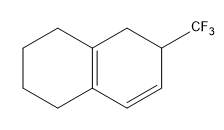

Predict the major product from the Birch Reduction

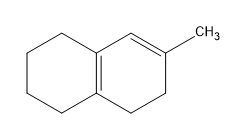
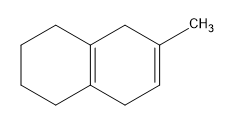
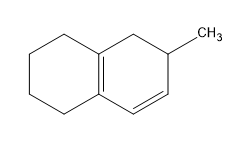
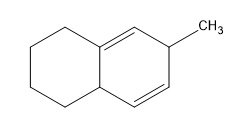
Do you want more practice?
More setsBirch reduction reduces aromatic compounds to isolated dienes. Substituents attached to the ring can affect the orientation of the double bonds.
Overview:
How exactly does Birch reduction work? Good news! It uses reagents very similar to those in a reaction you’ve already learned: dissolving metal reduction (AKA metal-ammonia reduction of alkynes). Before we cover the effects substituents have, let’s cover the basics. Birch reduction uses two equivalents of lithium or sodium metal, two equivalents an alcohol, and liquid ammonia. The only major difference between this reagent set and dissolving metal reduction is the presence of alcohol.
Mechanism:
The mechanism will look very similar to that of dissolving metal reduction, so strap in! The first step is sodium’s (or lithium’s) donation of an electron to the benzene, and that forms the radical anion. The resulting lone pair then pulls a hydrogen from the alcohol, resulting in a conjugated radical. Another equivalent of sodium donates an electron, and then the resulting lone pair pulls a hydrogen from another equivalent of alcohol. This mechanism produces an isolated diene, forgoing the more stable conjugated diene.
Birch reduction mechanism

Substituent Effects:
That’s all fine and dandy, but what happens when there are substituents on the benzene? Remember that benzene substituents can be divided into two categories: electron-donating groups (EDGs) and electron-withdrawing groups (EWGs). The methoxy group on anisole would be an EDG, and the chlorine on chlorobenzene would be an EWG. EDGs and EWGs will orient the double bonds differently. EDGs attach themselves to the diene, and EWGs
Birch reduction generic substituents

Above is the general reaction scheme with generic substituents. Below is the reaction scheme with toluene, aniline, nitrobenzene, and acetophenone.
 Birch reduction specific examples
Birch reduction specific examples
So, that’s about it! Good luck studying. Check out this Channel for tons of videos on this topic and everything else you need in Organic Chemistry.
Here’s what students ask on this topic:
What is the Birch reduction and how does it work?
The Birch reduction is a chemical reaction that reduces benzene to an isolated diene using elemental sodium, an amine, and alcohol. The mechanism involves the formation of a radical anion intermediate. Initially, an electron from sodium is donated to the benzene ring, creating a radical anion. This intermediate is then protonated by the alcohol, forming a cyclohexadienyl radical. Another electron from sodium is added, creating a carbanion, which is again protonated by the alcohol, resulting in an isolated diene. The reaction typically requires two equivalents of alcohol to complete the process.
 Created using AI
Created using AIWhat reagents are used in the Birch reduction?
The Birch reduction uses elemental sodium (Na), an amine (such as liquid ammonia, NH3), and an alcohol (commonly ethanol, EtOH, or tert-butanol, t-BuOH). The sodium provides electrons for the reduction process, the amine serves as a solvent, and the alcohol acts as a proton source to stabilize the intermediates formed during the reaction.
 Created using AI
Created using AIHow do electron-withdrawing and electron-donating groups affect the Birch reduction?
In the Birch reduction, electron-withdrawing groups (EWGs) and electron-donating groups (EDGs) influence the regioselectivity of the reaction. EWGs stabilize the radical anion intermediate by pulling electron density away, directing the double bonds away from themselves. Conversely, EDGs destabilize the radical anion by donating electron density, causing the double bonds to form adjacent to the donating group. This regioselectivity is crucial for predicting the structure of the final isolated diene product.
 Created using AI
Created using AIWhat is the mechanism of the Birch reduction?
The mechanism of the Birch reduction involves several steps: (1) An electron from elemental sodium is donated to the benzene ring, forming a radical anion. (2) This radical anion is protonated by the alcohol, creating a cyclohexadienyl radical. (3) Another electron from sodium is added, forming a carbanion. (4) This carbanion is protonated again by the alcohol, resulting in an isolated diene. The process typically requires two equivalents of alcohol to complete the reaction.
 Created using AI
Created using AIWhy is the Birch reduction important in organic chemistry?
The Birch reduction is important in organic chemistry because it provides a method to selectively reduce benzene rings to isolated dienes, which are valuable intermediates in the synthesis of various organic compounds. This reaction allows chemists to manipulate the structure of aromatic compounds, enabling the synthesis of complex molecules with specific functional groups and regiochemistry. The ability to control the position of double bonds and the influence of substituents makes the Birch reduction a versatile tool in synthetic organic chemistry.
 Created using AI
Created using AIYour Organic Chemistry tutors
- Predict the major products of the following reactions. (b) benzamide (PhCONH2) + Na (liquid NH3, CH3CH2OH)
- Propose mechanisms for the Birch reductions of anisole. Show why the observed orientation of reduction is favo...
- Predict the major products of the following reactions.(d) p-xylene + Na (liquid NH3, CH3CH2OH)(e) <IMAGE>...
- A common illicit synthesis of methamphetamine involves an interesting variation of the Birch reduction. A solu...
- Propose mechanisms for the Birch reductions of benzoic acid. Show why the observed orientation of reduction is...
- α-Tetralone undergoes Birch reduction to give an excellent yield of a single product. Predict the structure of...

